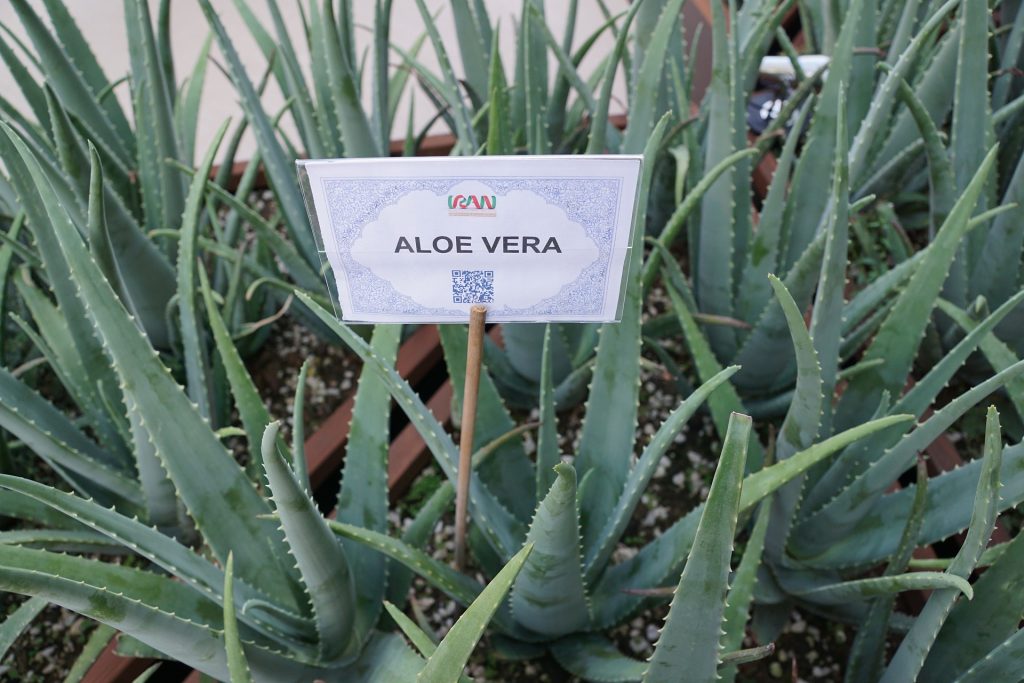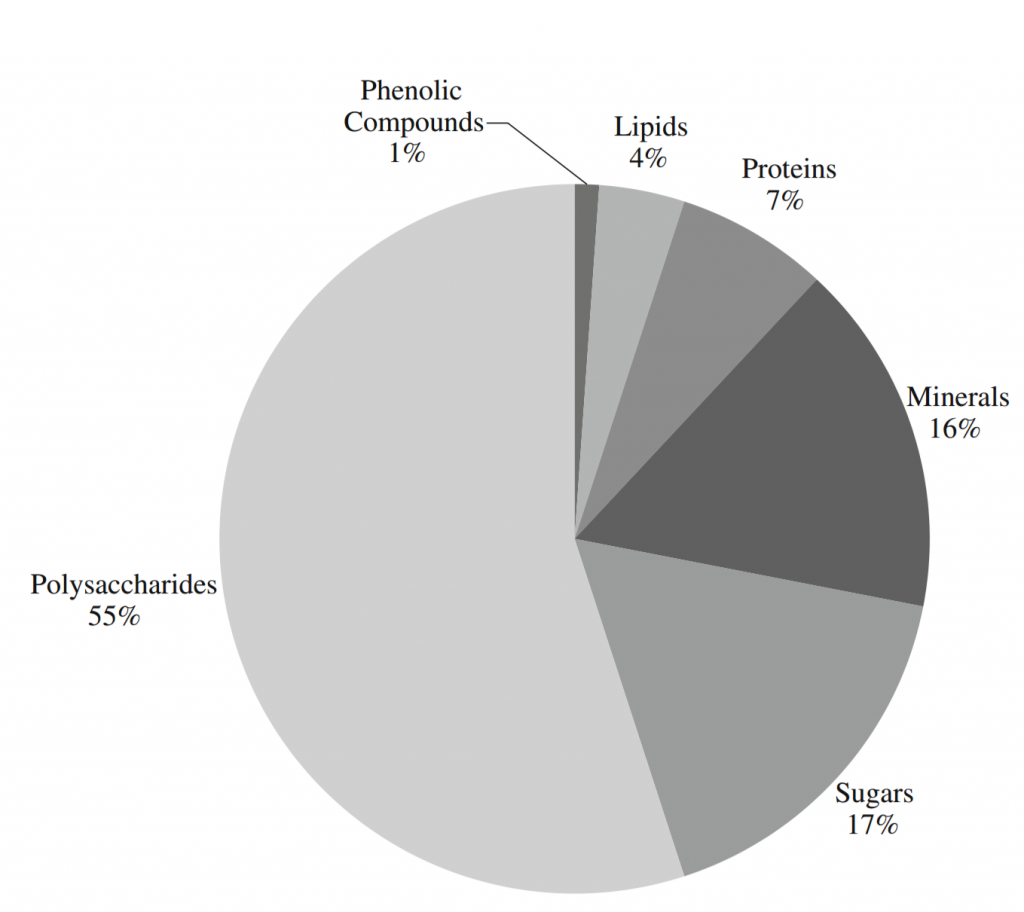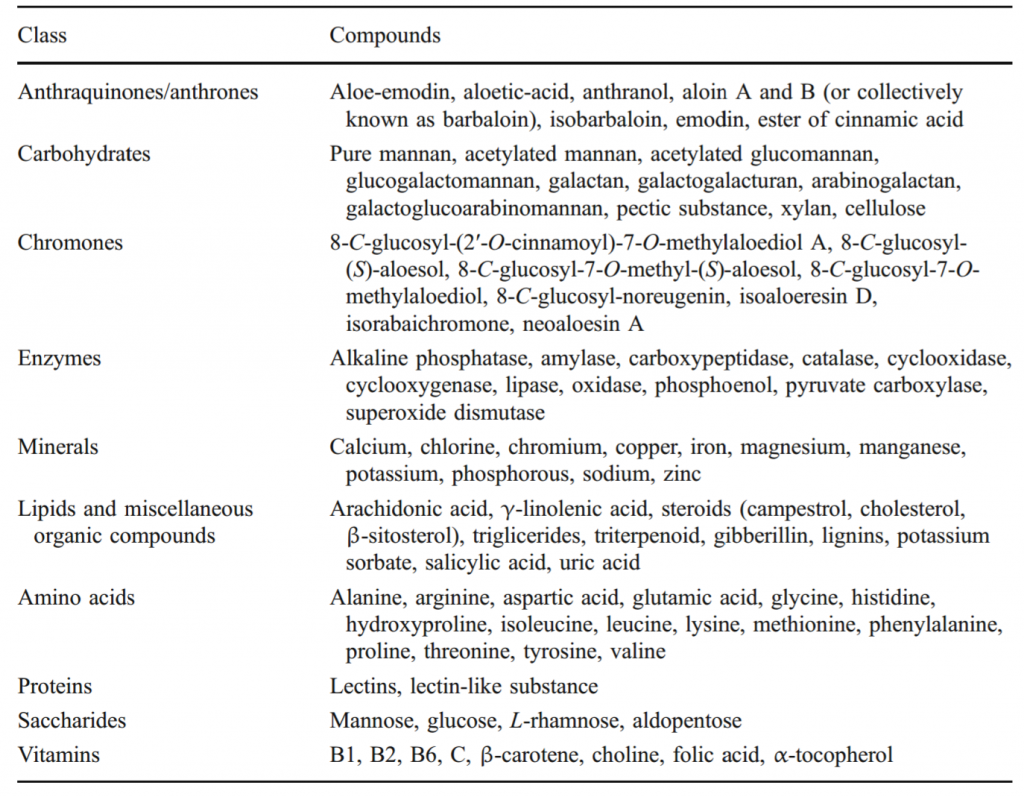 Aloe vera is a spiky perennial plant called a xerophyte that take roughly 4 years to mature. It produces 12 to 16 leaves per plant that taper to the ends and have saw-like teeth on their margins. Aloe vera contains a thick gel, and this gel is reputed to have medicinal properties. The gel can be harvested by removing 3 to 4 leaves every 6 to 8 weeks, and the gel used raw externally or processed for oral consumption. Aloe vera is known by a number of names in the literature, but is most commonly referred to as Aloe barbadensis Mill. Aloe vera is most commonly used topically as a gel, because evidence suggests it may have anti-inflammatory effects. This makes it particularly useful against burns or other skin damage, a use for which it is traditionally used. Oral Aloe vera has been reputed to improve health, and in traditional medicine, consumption of the gel from the leaves has been recorded historically in ancient medical writings. The current sale of aloe vera supplements is worth billions of US dollars.
Aloe vera is a spiky perennial plant called a xerophyte that take roughly 4 years to mature. It produces 12 to 16 leaves per plant that taper to the ends and have saw-like teeth on their margins. Aloe vera contains a thick gel, and this gel is reputed to have medicinal properties. The gel can be harvested by removing 3 to 4 leaves every 6 to 8 weeks, and the gel used raw externally or processed for oral consumption. Aloe vera is known by a number of names in the literature, but is most commonly referred to as Aloe barbadensis Mill. Aloe vera is most commonly used topically as a gel, because evidence suggests it may have anti-inflammatory effects. This makes it particularly useful against burns or other skin damage, a use for which it is traditionally used. Oral Aloe vera has been reputed to improve health, and in traditional medicine, consumption of the gel from the leaves has been recorded historically in ancient medical writings. The current sale of aloe vera supplements is worth billions of US dollars.
The chemical composition of aloe vera is complex and chemical analysis shows a number of nutrients within the gel that could account for its therapeutic actions both topically and orally. Most of the gel is composed of water (around 98 %) but over 200 chemicals have been identified within the aqueous medium. Based on dry weight, polysaccharides account for most of the gel, with sugars, minerals, proteins, lipids and phenolic compounds making up a decreasing amount of the dry weight. Aloe vera also contains a number of vitamins including thiamine, riboflavin, folic acid, pyridoxine, vitamin E and β-carotene. A number of essential minerals and amino acids are also present in the gel. The anti-inflammatory, analgesic and anti-allergy effects of aloe vera are suggested to come from a number of novel compounds found within the gel. These include acemannan, C-glycosyl chromone, bradykinase (anti-inflammatory), salicylic acid (analgesic, anti-inflammatory) and aprogen and magnesium lactate (anti-allergic).
Raw aloe vera gel possesses a certain degree of laxative effect, and this relates to the presence of the aloin A and B, compounds collectively known as barbaloin. This laxative effect is likely responsible for the side effects sometimes seen when the gel is consumed orally, and these can include stomach cramps and diarrhoea. Aloe vera is used as a flavouring component in some foods and as such it does not possess its laxative effects when in this form. Most commercially available supplement also do not possess laxative effects. This is because a filtration and stabilisation steps on the gel can be performed, and this reduces or eliminates the presence of the laxative producing compounds. Of course in some cases, the laxative effects of aloe vera gel may be desirable, in which case it makes sense to consume the whole unprocessed leaf gel. However, long term consumption of the raw gel is not recommended due to the possible long term health effects of laxatives, including a certain amount of potassium loss as well as dehydration.
Eat Well, Stay Healthy and Protect Yourself
RdB



